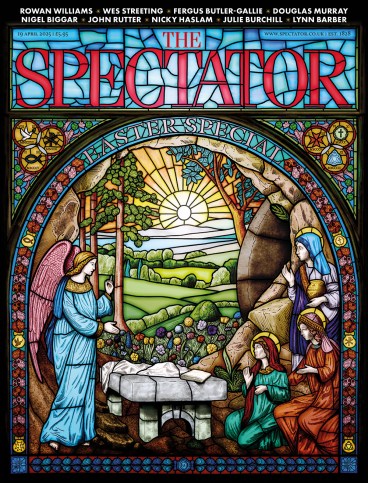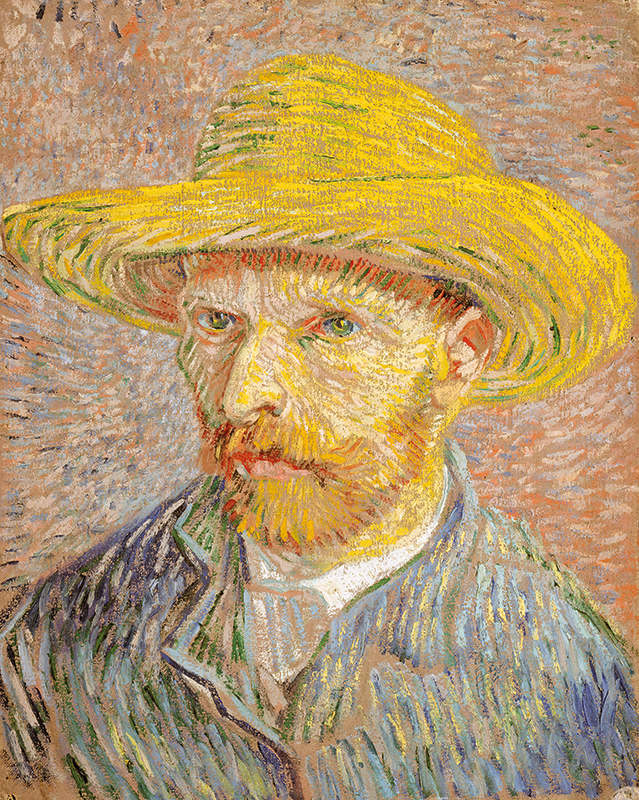
Six months before Vincent van Gogh’s death, the critic Albert Aurier, waxing poetical, wrote an article entitled Les Isolés on the then unknown painter. It raised to sainthood the solitary genius driven to insanity by an uncomprehending world. ‘Is he not one of the noble and immortal race which the common people call madmen but which men among us consider sort of saints?’ The man had already become myth. His life would be a sacrament and his suicide a reproach. It has remained that way ever since.
Miles J. Unger thinks otherwise. He recasts our hero as the very opposite of isolé, a painter whose stylistic development was totally dependent on the artists and influences surrounding him in Paris. As for sainthood, what emerges is a Donald Trump or an Elon Musk, a thin-skinned master of coercive control disrupting those around him by the judicious use of rages, sulks, religious high-horsery and entitlement.
Vincent would talk non-stop, day and night, even shaking Theo awake if he fell asleep
After the pastor Theodorus van Gogh was attacked by his oldest son with a knife, he sensibly wanted him committed; but Vincent refused. Responsibility for the Great Disruptor was assumed by his hero-worshipping younger brother Theo, who supported Vincent both financially and emotionally for the rest of his life. Vincent, who never earned a penny, abused and belittled Theo for kowtowing to Mammon while (Unger tritely repeats several times – who edited this book?) biting the hand that fed him.
Fire in the Soul focuses on the years 1886-88 when the brothers lived together in Paris, during which time Vincent transformed from the plodding painter of social protest into the towering genius of universal vision, and Theo came close to breakdown.
First we run through the early life. The religious mania; Vincent taking a cudgel to bed to belabour his back; his evangelising among the poorest of the poor in Borinage, the Belgian coal-mining district. There his oddity was so frightening that people pelted him and he was ejected from the church for excessive missionary zeal.
His art of this period reflected his sado-masochism. Penitential pictures of grinding poverty culminated in ‘The Potato Eaters’, made from the dusty colours of unwashed potatoes. Simultaneously, his untrammelled sex drive led to exploitative relationships, dominating women washed up on the shore of desperation. Following a particular pregnancy, the priest forbade his parishioners to model for Van Gogh. Local life had reached a dead end. The painter fled to Antwerp, flung off his peasant smock and reinvented himself as a flâneur, a sinister pavement-lingerer hunting out models in brothels and dance halls and borrowing the ghastly lecherous leers of Frans Hals to immortalise them. He was treated for syphilis.
When dead-end 33-year-old Vincent flopped on his brother’s Paris doorstep in 1886, the hardworking Theo had spent six years establishing himself as an important art dealer at Goupil’s gallery, supporting his mother and siblings on his salary of 300 francs a month. Vincent got 150 francs. It was never enough. When Theo implored him to stick to a budget, Vincent guilt-tripped him by asking: ‘Am I less than your creditors?’ Employing Vincent in the gallery was disastrous. Spittle-flecked sermons explaining to browsers that art was holy, not just something colourful to hang on a wall, did not go down well.
Vincent persisted in mocking Theo for pimping commercial art while failing to sell his own potato-coloured pictures. But they were unsaleable. Social conscience à la Millet was old hat. Impressionist light-play was the new kid on the block. Theo was selling Monet’s pictures for thousands.
He suggested to Vincent that to increase saleability, colour and light had to enter his canvases. Theo’s wide network of artists provided the material that forged the eventual style. Adolphe Monticelli brought vibrant colour and Seurat’s pointillism inspired study of optical effects and deconstruction, though his disciplined dots were impossible for one inclined towards chaotic chromatic explosions. Perspective was vital to Impressionism, but Vincent found it awfully difficult. He called it ‘witchcraft’ and relied on a patent contraption – a wooden frame with wires arranged like a Union Jack designed to impose mathematical rules upon views. Thankfully, he never got the hang of it. Fantastically subjective multiple-point perspective is part of his magic.
His figures also were hopeless. To improve them, Theo suggested that he study anatomy at Fernand Cormon’s studio. Once again, social awkwardness got him thrown out. And so, while Vincent is able to enthral us with cartwheeling landscapes and close-up portraits that are speeded up studies of psychological states seething with nervous energy, his clumsy unlifelike figures, allied with his wonky perspective, intensify the skewed reality that draws us into his somehow totally convincing irrational world.
Both brothers were suffering from the syphilis that would drive them insane. Both would be dead within three years. These two frantic years that were the making of Van Gogh’s art came at terrible cost. In exalted mood, Vincent would talk non-stop, day and night, following Theo into his bedroom and, if he fell asleep, shaking him awake to continue the monologue. Theo’s dilemma was that while he was barely hanging on to his salaried position that was imperilled by his unhinged brother, he fully understood the emerging artistic significance of that same man.
Vincent’s ‘Self-portrait with Straw Hat’ (1887) is rough and unsubtle, but all the elements are there. The brushstrokes are no longer ad hoc but dynamically directional, as if there’s a gravitational pull behind the whole composition obeying an invisible law, like iron filings responding to a magnetic field. He is also starting what he called ‘colour gymnastics’, based on his belief that complementary colours corresponded to the highest ideal form of earthly love, each fulfilling its potential through action with its opposite.

Event
The Book Club Live: An evening with Max Hastings
Towards the end of two years living hugger-mugger, Theo nearly went under. Giving in, he inhabited the dangerous margins alongside his brother, ‘their vices no longer out of step but synchronised’. They drank too much and whored too much, but the upside was that Vincent drew Theo into the new art of the emerging artists that would take over from established stars such as Monet and Degas. Now Theo bought Toulouse-Lautrec and Gauguin. And it was through Gauguin that Theo was released from this unbearable personal and professional tension. Vincent became obsessed with the idea of painting with Gauguin, and Theo got Vincent out of his hair by bankrolling him to go to Arles and paying Gauguin 150 francs a month to live with him.
Inheriting from Theo the psychological switchback of living à deux with Vincent, Gauguin soon found a way of halting the machine-gun monologues simply by saying: ‘Corporal, you’re right.’ Their nine weeks together in the Yellow House comprise one of the most famous episodes in art history, culminating in Vincent cutting off his ear and spending the rest of his life in asylums before shooting himself. This book ignores Arles, ears, asylums and suicide altogether. Sticking to the word ‘Paris’ in the title, it pointlessly includes two brief and totally inconsequential post-ear journeys to the capital, the first en route from one asylum to another, the second lasting less than a day, with Vincent visiting Theo, his wife Jo and their baby.
Unger, who has also written on Picasso, Machiavelli, Michelangelo and Winslow Homer, ably proves his thesis that Vincent might never have made his artistic breakthrough without those two years in Paris during that highly charged period when the battle of the -isms saw Impressionists fighting like cats in a bag while also warring with the Cloisonists, Divisionists, Synthesists and Symbolists. Their clashing theories formed his style at manic speed, giving him the means to express on canvas art that could not have been forged without the stimulation of that combativeness.
In casting our hero as a bullying Trump/Musk jerking everyone around on a rope braided from rage, religious righteousness, victimhood and utter selfishness, the book lacks humanity and understanding. Read the 600-odd letters between the brothers and you feel gut-wrenching compassion for both. Gauguin’s account of his time in the Yellow House refers to ‘my gentle friend Vincent’. It’s a kinder understanding of an impossible man.








Comments